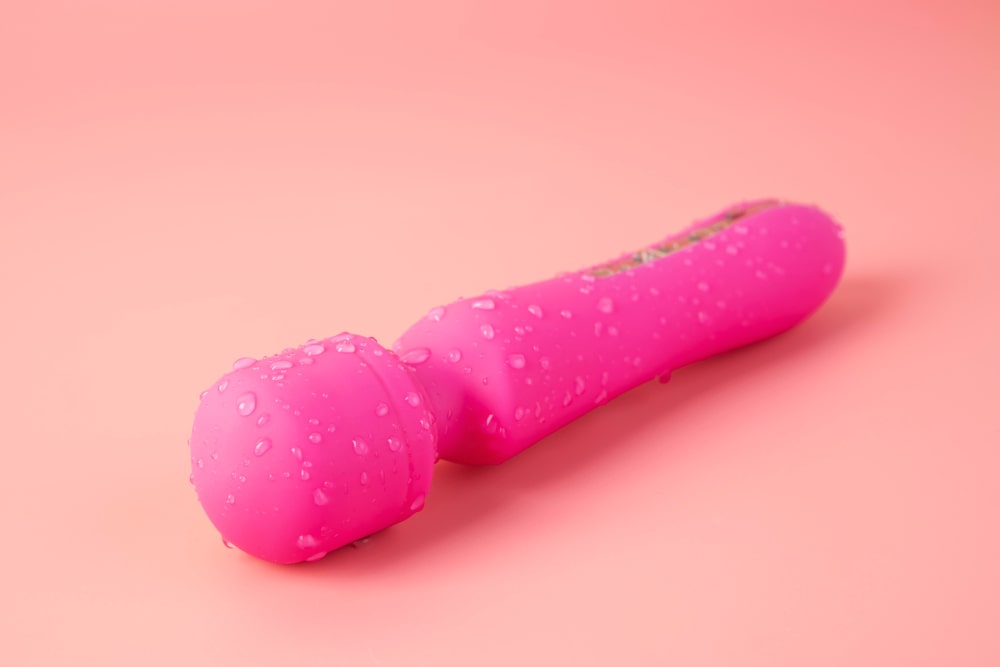Sometimes, finding the perfect dildo can be a challenge. Maybe you’ve browsed countless stores or websites, and nothing seems just right. I understand the frustration. But guess what? You can create your own tailored to your desires.
This article will teach you the ins and outs of how to make a dildo, but you’ll also gain the confidence to craft one that suits your personal preferences. Plus, there’s a unique satisfaction in using something you’ve made yourself.
For those in a rush: This guide covers the materials you’ll need, design considerations, molding techniques, and essential safety precautions. In short, with the right materials and patience, you can craft your own pleasure tool. Alright, ready to embark on this DIY journey? Let’s start!

Materials and Tools Needed to Make a Dildo
Crafting a dildo isn’t just about the end result; it’s about ensuring the journey is safe and enjoyable. Let’s delve into the necessary materials and tools and address some common concerns.
Safe Materials for Making Dildos
Silicone:
- Why it’s great: Medical-grade silicone is the gold standard. It’s body-safe, non-porous (meaning it won’t harbor bacteria), and hypoallergenic.
- Pain point: Ensure it’s 100% silicone. Some products are labeled as silicone but contain other additives.
TPE (Thermoplastic Elastomer):
- Why it’s great: It’s soft and flexible, mimicking the feel of real skin.
- Pain point: It’s porous, so it needs a thorough cleaning and might not last as long as silicone.
Glass:
- Why it’s great: It’s sleek, non-porous, and can be used for temperature play.
- Pain point: Ensure it’s borosilicate glass (like Pyrex) for durability. Avoid any glass with imperfections or cracks.
Stainless Steel:
- Why it’s great: It’s non-porous, durable, and has a unique weighty feel.
- Pain point: It can be cold to the touch but can also be used for temperature play by warming or cooling it safely.
Essential Tools for the Crafting Process
- Molding kits
These kits often come with everything you need to create a mold of an existing shape. They’re beginner-friendly and a great starting point.
- Sculpting tools
For those who want to shape their dildo from scratch, tools like spatulas, carving tools, and smoothers will be your best friends.
Essential for mixing silicone or other materials
- Thermometer
Especially if you’re working with materials that need heating or cooling to a specific temperature.
- Sandpaper (Fine Grit)
For smoothing any rough edges or imperfections, especially if you’re working with glass or metal.
A Few Tips Before You Start
- Safety first: Always ensure the materials you’re using are body-safe. If in doubt, do more research or ask experts.
- Patience is key: Crafting a dildo is both an art and a science. It might take a few tries to perfect it, and that’s okay.
- Cleanliness: Always work in a clean environment. Once your dildo is crafted, ensure you clean it thoroughly before use.
Materials and tools are crucial for a safe and satisfying DIY dildo experience. Remember, it’s not just about the destination but ensuring a safe and enjoyable journey there.
Most Realistic Dildo!
How to Make a Dildo – Things to Consider
Let’s move on to the practical tips on how to make your own dildo.
Consider the size
Start by considering the length and girth of your dildo. If you’re unsure, start with an average size (around 5-7 inches in length and 1-1.5 inches in diameter) and adjust based on comfort.
Shape it up
Think about curvature. Some prefer a straight design, while others opt for a curve to target specific areas. Make it as you wish and as you prefer the shape the most.
Consider the texture
Smooth? Ribbed? Nodules? The world is your oyster. Remember, you can adjust the texture later, so starting smoother might be a good idea.
The flared base: A safety must-have
Always include a flared base, especially if you’re considering any anal play. This prevents the toy from getting lost inside, a real concern and a common ER visit you’d rather avoid.
Molding and Shaping
If you’re replicating an existing shape, molding kits are your go-to. Simply mix, pour, and let it set. For the artisans, start with a base material like clay or wax. Sculpt until satisfied, then use this as your mold for materials like silicone.
Texture Techniques:
Consider using tools or clean, unused cords or rope for ribbed textures. Small, rounded tools or even the end of a pen can create those desired bumps for nodules.
Smooth Moves
Sandpaper (fine grit) is essential for smoothing imperfections, especially when working with harder materials. For silicone, a clean cut with a sharp knife can help trim excess.
Polishing: For glass or metal, a gentle polish can give it that finished, sleek look.
The Safety Test
Before diving into pleasure, test your dildo for any rough spots or imperfections that could cause discomfort or injury. Run it along the inside of your wrist; this sensitive area can help you detect any issues.
Remember: Crafting your dildo is a journey. It might take a few tries to get it right, but with patience and attention to detail, you’ll have a toy tailored just for you.

How to Make a Homemade Dildo
Making a homemade dildo is enticing for many, but there are important precautions to remember. Your body’s internal environments are sensitive, so you want to ensure that any DIY dildo is safe, clean, and won’t cause any harm.
Household Items as Alternatives
Before venturing into creating your DIY sex toy, it’s worth noting that many household items can double up as makeshift dildos. Some popular choices include:
- Hairbrush handles: They’re usually smooth and can vary in size.
- Candles: Opt for the thicker, smoother ones without any added decorations or features.
- Vegetables: Think cucumbers or carrots. They’re organic and come in various sizes.
However, these are just a few options. There’s a world of objects out there. The main thing is to ensure they’re safe.
What Items Can be Safely Used?
Choose non-porous materials that can be easily cleaned and disinfected. Silicone, stainless steel, glass, or hard plastic are usually safe bets. Avoid porous materials as they can harbor bacteria.
Avoid anything with sharp edges or rough surfaces. You don’t want to cause any internal abrasions. You don’t want your DIY dildo breaking mid-use.
Precautions to Take
- Always use a condom. This creates a barrier between you and the object, especially if it isn’t designed for sexual use. This helps to keep things hygienic.
- Clean before and after. Even if you’re using a condom, always clean your chosen object before and after use. Warm water and mild soap will usually suffice, but for extra peace of mind, use a sex toy cleaner.
- Test for allergies. If you’re using materials you’ve never been exposed to, test on a less sensitive area of your body first.
- Start slow. Especially if this is your first time using a DIY dildo. You want to ensure that the size and shape are comfortable for you.
- Never use anything that can shatter. This should go without saying, but it’s worth repeating.
- Avoid shared use. If you’re making a DIY dildo, it’s best to keep it for personal use only. Shared toys can spread infections.
3D Printing
You can also learn how to make a diy dildo by using a 3D printer.
- Sketching out your idea: Begin with a rough sketch of the desired shape and size. This can be on paper or digital platforms like Photoshop or Procreate. Think about what you want regarding length, girth, and curvature.
- Transferring to 3D software: Programs like Blender, Tinkercad, or Fusion 360 allow you to sculpt your idea into a three-dimensional model. These platforms might look intimidating, but plenty of beginner-friendly tutorials are available online.
- Detailing and refinement: Refine the model once the basic shape is ready. Smooth out any sharp edges or rough surfaces. Remember, this is for intimate use, so comfort is paramount.
Choosing the Right Material for Printing
- Material Safety: Silicone is the go-to for most sex toys due to its body-safe, non-porous nature. However, most 3D printers don’t print with silicone. Instead, you can print a mold of your design and later cast it in silicone.
- Temporary models: If you’re still in the design phase and want to prototype, materials like PLA or ABS can be used. Remember, these aren’t body-safe for long-term intimate use but can give you an idea of shape and size.
Post-processing Steps
- Cleaning: After printing, there’s often residue left behind. Clean the model or mold thoroughly using isopropyl alcohol or a gentle soap.
- Smoothing: 3D prints often have visible layer lines. You can smooth these out using sandpaper, starting with a coarser grain and gradually moving to finer grains. Always wear protective gear like masks when sanding to avoid inhaling particles.
- Casting (if using a mold): Once your mold is ready, it’s time to cast. Mix your silicone as per the manufacturer’s instructions, pour it into the mold, and allow it to cure. Make sure to use body-safe, medical-grade silicone.
- Final Clean: Give your silicone dildo a good clean to remove any residues.
Conclusion
Creating your very own DIY pleasure tool is a journey that combines creativity, precision, and adherence to safety standards. In my detailed guide on how to make dildo, I emphasized the importance of selecting body-safe materials such as medical-grade silicone, glass, or stainless steel.
I explored different techniques ranging from hand sculpting to 3D printing technology for crafting the perfect piece tailored to your desires. Along with considering the aesthetics and physical structure, it is imperative to prioritize safety by ensuring smooth edges and a flared base.




